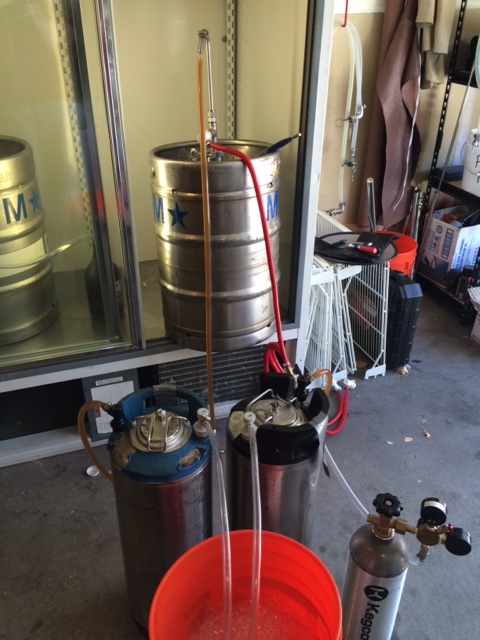I see. So, in theory, could you just release some pressure from the keg that's getting filled, by the valve on the coupler, as you go?
Should be the same thing right?
If I remember gas laws from college, then as the volume increases, the pressure would be as well, so if the pressure in the filling keg > pressure in the transferring carboy, that's probably why it stops.
Intermittent releasing on the filling keg should fix that, yeah?
Good point.
I keep thinking about this, but I'm pretty stumped, as the mad fermentationist and JC from Trillium have both stated that they prefer to hop while there is still some yeast activity occurring. Something about the (still) active fermentation contributes another level of depth to the hop flavor and aroma?
So, if that's the case, then you'd lose some of that hop presence if you crashed it after, and you wouldn't want to crash it prior to the yeast finishing their job.
I'm wondering if maybe I could ferment in a keg, then just transfer the beer on the 3rd or 4th day of fermentation, into another keg with the dry hop bag inside.
That way I could purge out some yeast first, but there'd still be some left to shoot over to the secondary keg w/ the dry hop?
I dunno. its confusing.
One thing is for sure, though... our hoppy beers fade FAST. Like, 1 week fast.
I'm thinking it's due to not having much hops in the boil, and all at whirlpool/dry hop.
Although, I've seen several people say that they have no problems doing that.
I'm lost





![Craft A Brew - Safale S-04 Dry Yeast - Fermentis - English Ale Dry Yeast - For English and American Ales and Hard Apple Ciders - Ingredients for Home Brewing - Beer Making Supplies - [1 Pack]](https://m.media-amazon.com/images/I/41fVGNh6JfL._SL500_.jpg)























































